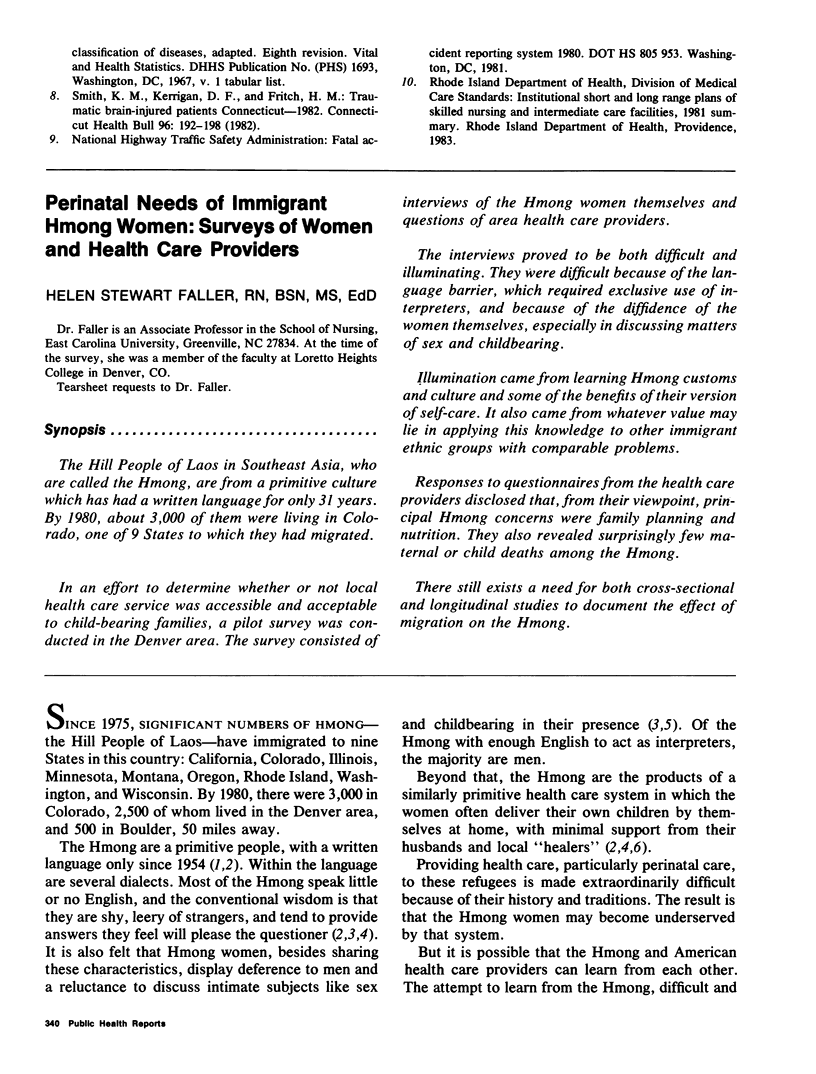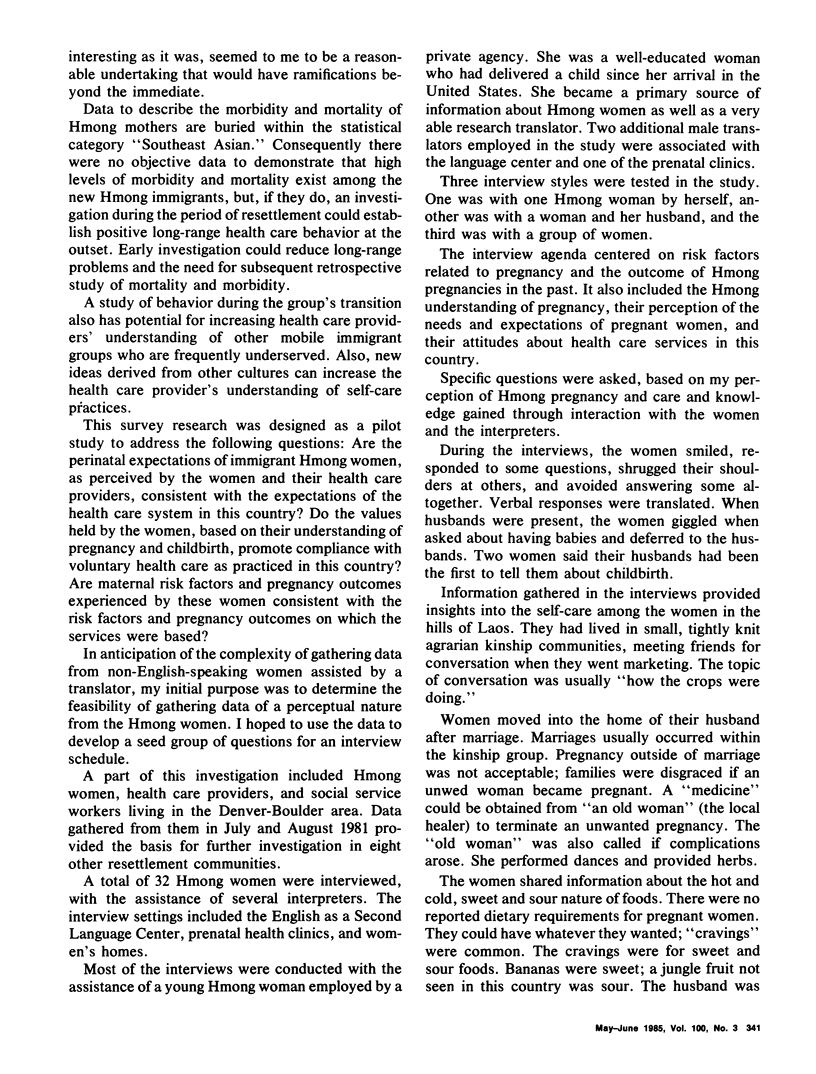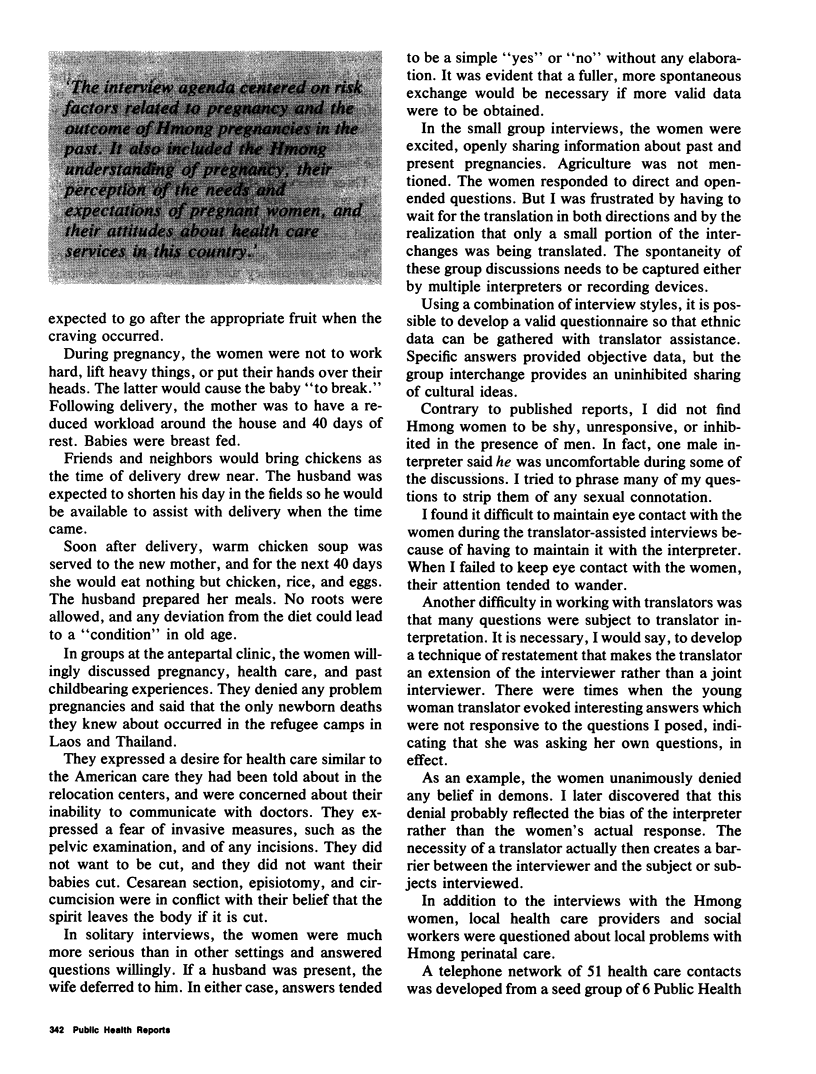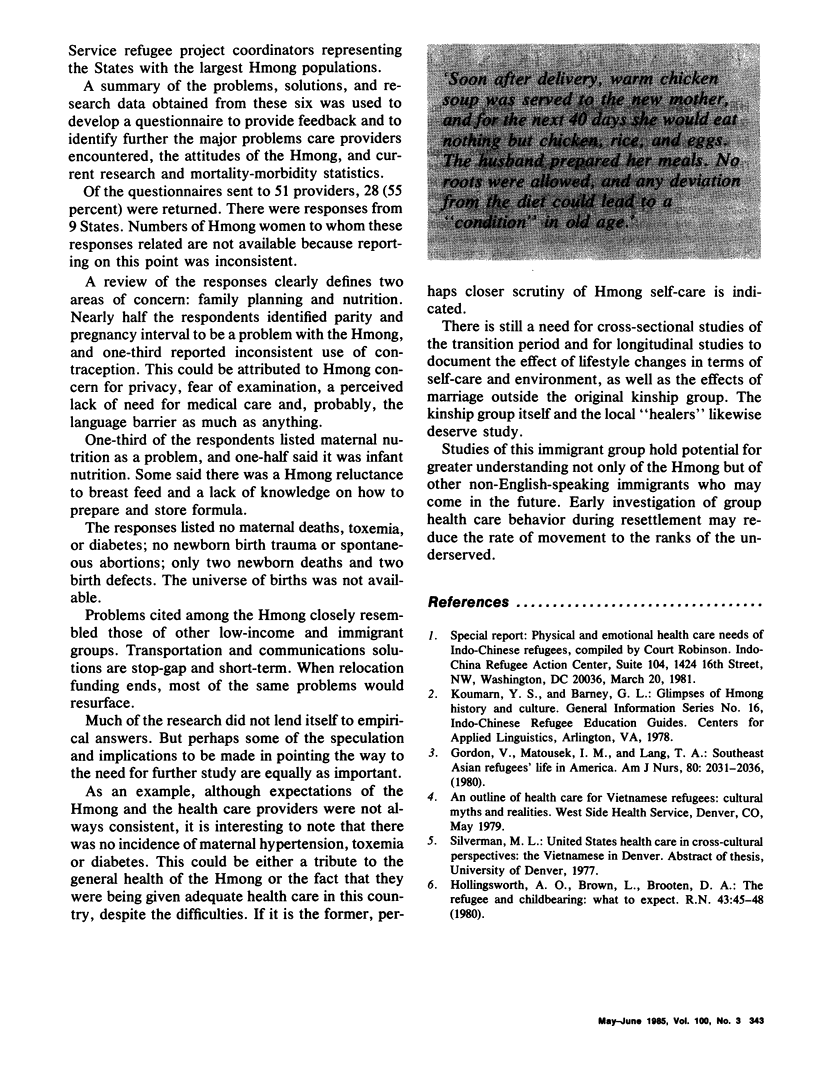Abstract
The Hill People of Laos in Southeast Asia, who are called the Hmong, are from a primitive culture which has had a written language for only 31 years. By 1980, about 3,000 of them were living in Colorado, one of 9 States to which they had migrated. In an effort to determine whether or not local health care service was accessible and acceptable to child-bearing families, a pilot survey was conducted in the Denver area. The survey consisted of interviews of the Hmong women themselves and questions of area health care providers. The interviews proved to be both difficult and illuminating. They were difficult because of the language barrier, which required exclusive use of interpreters, and because of the diffidence of the women themselves, especially in discussing matters of sex and childbearing. Illumination came from learning Hmong customs and culture and some of the benefits of their version of self-care. It also came from whatever value may lie in applying this knowledge to other immigrant ethnic groups with comparable problems. Responses to questionnaires from the health care providers disclosed that, from their viewpoint, principal Hmong concerns were family planning and nutrition. They also revealed surprisingly few maternal or child deaths among the Hmong. There still exists a need for both cross-sectional and longitudinal studies to document the effect of migration on the Hmong.
Full text
PDF



Selected References
These references are in PubMed. This may not be the complete list of references from this article.
- Gordon V. C., Matousek I. M., Lang T. A. Southest Asian refugees: life in America. Am J Nurs. 1980 Nov;80(11):2031–2036. [PubMed] [Google Scholar]
- Hollingsworth A. O., Brown L. P., Brooten D. A. Indochina moves to Main Street. The refugees and childbearing: what to expect. RN. 1980 Nov;43(11):45–48. [PubMed] [Google Scholar]


